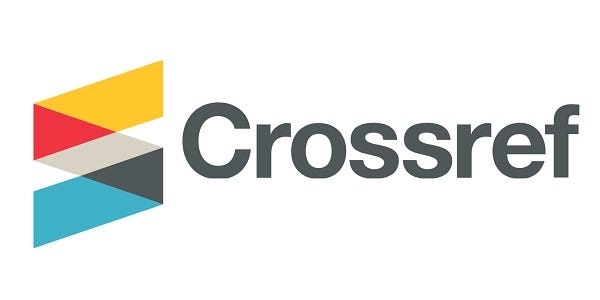Pemanfaatan Limbah Cangkang Kerang dan Abu Jerami Sebagai Substitusi Parsial Terhadap Kuat Tekan Beton
DOI:
https://doi.org/10.47080/josce.v5i02.2639Keywords:
Compression Strength, Oyster-Shells, Rice Husk AshAbstract
As an archipelagic country and agricultural land, coastal areas and agriculture dominate most of Indonesia's mainland. These conditions make oyster shells waste and rice husk ash very easy to obtain in large quantities as a component for making concrete. It can be an appropriate technological solution for manufacturing concrete with local wisdom. The research used 24 specimens in cylinders with a diameter of 15cm and a height of 30cm, referring to SNI 7656-2012 with a k-300 or 25 MPa concrete plan. The composition of 10% oyster-shells waste was used as a substitute for fine aggregate, while the composition of rice husk ash varied, namely 3%, 5%, and 7% as a substitute for cement. Concrete curing was carried out 14 and 28 days before the compression test. The compressive strength test results for regular concrete at 14 and 28 days, respectively, were 24.72 MPa and 25.00 MPa according to the design compressive strength. The compressive strength value of concrete with a mixture of rice straw ash and shellfish increased from regular concrete at 14 days of age, namely 25.95 MPa, 27.18 MPa, and 26.04 MPa for each variation of 3%, 5%, and 7 %. Whereas at 28 days of concrete age, using variations of shellfish waste mixture of 3%, 5%, and 7% obtained compressive strength of 27.18 MPa, 28.21 MPa, and 26.99 MPa. Thus, there is an increase in compressive strength ranging from 0.05% -0.12% in concrete using a mixture of oyster-shells waste and rice husk ash
References
Afranita, G., Anita, S., & Hanifah, T. A. (2014). Potensi Abu Cangkang Kerang Darah Sebagai Adsorben Ion Timah Putih. 01(01), 1–5.
Attah, I. C., Etim, R. K., & Ekpo, D. U. (2018). Behaviour of periwinkle shell ash blended cement concrete in sulphuric acid environment. Nigerian Journal of Technology, 37(2), 315. https://doi.org/10.4314/njt.v37i2.5
Bunyamin, B., & Mukhlis, A. (2020). Utilization of Oyster Shells as a Substitute Part of Cement and Fine Aggregate in the Compressive Strength of Concrete. Aceh International Journal of Science and Technology, 9(3), 150–156. https://doi.org/10.13170/aijst.9.3.17761
Darmawan, A., Anggraini, D., & Gunawan, G. (2008). Pengaruh Substitusi Semen oleh Silika Abu Sekam Padi terhadap Kuat Tekan dan Suhu Reaksi Semen Portland. Jurnal Kimia Sains Dan Aplikasi, 11(1), 15–19. https://doi.org/10.14710/jksa.11.1.15-19
Endale, S. A., Taffese, W. Z., Vo, D. H., & Yehualaw, M. D. (2023). Rice Husk Ash in Concrete. Sustainability (Switzerland), 15(1). https://doi.org/10.3390/su15010137
Hariyanto, A., Sari, V. K., & Pujiastuti, C. (2020). Kinetika Reaksi Pembentukan Kalsium Fosfat dari Asam Fosfat dan Cangkang Kerang Darah. ChemPro, 1(02), 32–38. https://doi.org/10.33005/chempro.v1i2.48
Hasan NMS, Sobuz MHR, Khan MMH, Mim NJ, Meraz MM, Datta SD, Rana MJ, Saha A, Akid ASM, Mehedi MT, Houda M, S. N. (2022). Integration of Rice Husk Ash as Supplementary Cementitious Material in the Production of Sustainable High-Strength Concrete. Journal Materials (Basel). DOI 10.3390/Ma15228171. PMID: 36431656; PMCID: PMC9699146., 15(22), 8171.
Jamwal, A., Kumar, S., & Gautam, C. P. (2019). Study of Partial Replacement of Fine Aggregate by Oyster Shell and Partial Replacement of Cement by Rice Husk Ash. In Jaypee University of Information Technologywaknaghat, Solan Pradesh, Indi, May 2019.
Kharismadewia, D., Afrizal, M., & Pelantikaa, M. (2022). Pengaruh Aditif Limbah Kerang Darah (Anadara Granosa) Terhadap Kualitas Beton K-225. Jurnal Inovator, Homepage: www.ojs.politeknikjambi.ac.id/Inovator, 5(2), 37–40.
Li, G., Xu, X., Chen, E., Fan, J., & Xiong, G. (2015). Properties of Cement-Based Bricks with Oyster-Shells Ash. Journal of Cleaner Production, 91, 279–280.
Liangsari, O., & Whardono, A. (2016). Pengaruh Penambahan Limbah Kerang Terhadap Waktu Pengikatan Awal Dan Workability Pada Pembuatan Beton Geopolymer Dengan Temperatur Normal. Rekayasa Teknik Sipil, REKATS, FT UNESA Ketintang - Surabaya, 2(2), 23–30.
Malasyi, S., & Wesli, W. (2017). Analisis Pengaruh Penggunaan Abu Jerami Terhadap Kuat Tekan Beton. Teras Jurnal, 4(2), 41–49. https://doi.org/10.29103/tj.v4i2.22
Maryam, S. (2006). Pengaruh Serbuk Cangkang Kerang Sebagai Filter Terhadap Sifat-Sifat dari Mortar. In Skripsi. FMIPA. Universitas Sumatera Utara (USU) Medan, Indonesia.
Minh, L. T., & Tram, N. X. T. (2017). Utilization of Rice Husk Ash as partial replacement with Cement for production of Concrete Brick. MATEC Web of Conferences, 97, 0–5. https://doi.org/10.1051/matecconf/20179701121
No, H. K., Lee, S. H., Park, N. Y., & Meyers, S. P. (2003). Comparison of Physicochemical, Binding, and Antibacterial Properties of Chitosans Prepared without and with Deproteinization Process. Journal of Agricultural and Food Chemistry, 51(26), 7659–7663. https://doi.org/10.1021/jf030226w
Sani, J. E. (2019). Response of Oyster Shell Ash Blended Cement Concrete in Sulphuric Acid Environment. Civil and Environmental Research, 2017, 62–74. https://doi.org/10.7176/cer/11-4-07
Siregar, S. M. (2009). Pemanfaatan kulit kerang dan resin epoksi terhadap karakteristik beton polimer. In Universitas Sumatera Utara (USU) Medan, Indonesia.
Somarriba Sokolova, L. N., Ermakova, E. V., & Rynkovskaya, M. (2018). A Review of Agro-waste Materials as Partial Replacement of Fine Aggregate in Concrete. IOP Conference Series: Materials Science and Engineering, 371(1). https://doi.org/10.1088/1757-899X/371/1/012012
Tayeh, B. A., Hasaniyah, M. W., Zeyad, A. M., & Yusuf, M. O. (2019). Properties of concrete containing recycled seashells as cement partial replacement: A review. Journal of Cleaner Production, 237, 117723.
Wiyarsi, A., & Erfan, P. (2012). Pengaruh Konsentrasi Kitosan Dari Cangkang Kerang Terhadap Efesiensi Penyerapan Logam Berat. Universitas Negeri Yogyakarta. Yogyakarta.










